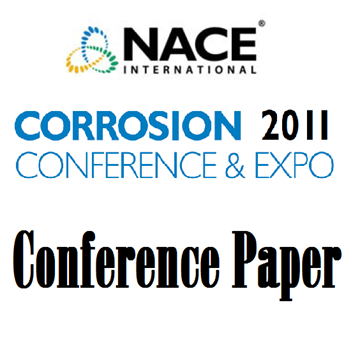Search
51312-01210-Prevention of Mild Steel Corrosion by Carbon Dioxide / Oxygen Mixtures Using Corrosion Inhibitors to
Also Purchased
07315 FLOW DEPENDENCE OF CARBON DIOXIDE CORROSION RATES AND THE INTERFERENCE OF TRACE DISSOLVED OXYGEN
Product Number:
51300-07315-SG
ISBN:
07315 2007 CP
Publication Date:
2007
$20.00
51314-4299-Impact of Oxygen Ingress in CO2 Corrosion of Mild Steel
Product Number:
51314-4299-SG
ISBN:
4299 2014 CP
Publication Date:
2014
$0.00
11120 Sulfur Corrosion Due To Oxygen Ingress
Product Number:
51300-11120-SG
ISBN:
2011 11120 CP
Publication Date:
2011
$20.00




